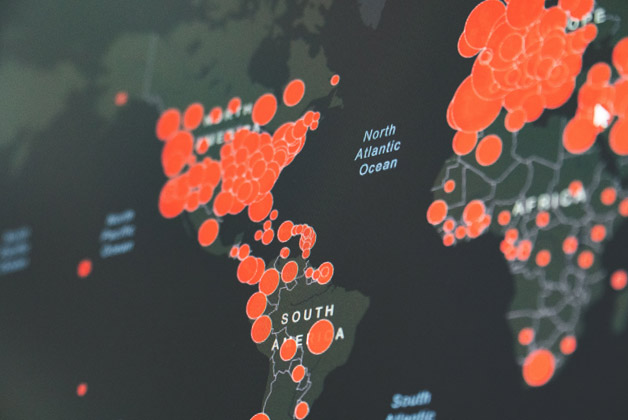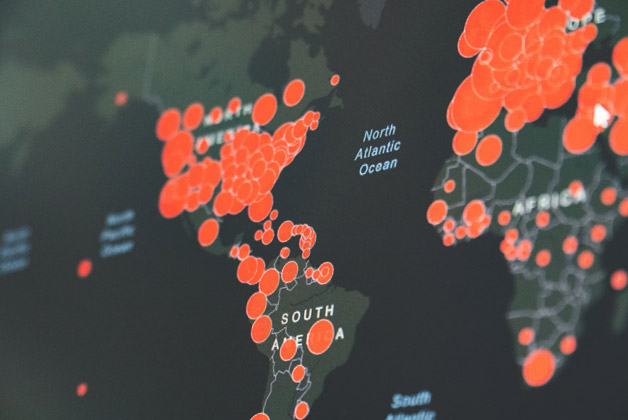

What does one do in times like these when the entire world is reeling under a tragedy of unprecedented proportions? Millions of people have been infected and thousands have died. What is more, millions have lost jobs are going hungry. However, our government has fallen short on every expectation. Testing has been meagre, there has been no improvement in hospital capacities, ICUs are overcrowded and ventilators are far too few. On top of their, there is mere lip service instead of solid economic support. There never was a more critical time for government money to reach all vulnerable households across the country. Apart from a minimal ration for Aadhar owners till November this year, there is nothing else that we have seen coming form a government that should have opened its purse strings.
A humanitarian crisis is an event that impacts the safety, security and health of a large group or community. A crisis can either be a natural disaster or a man-made hazard. Such crises heighten inequalities and maximise insecurity among vulnerable groups. Presently, over one billion people or 16% of the world’s population live in countries under turmoil and the number of such countries has risen to 31 in 2019. Among those countries with five consecutive years of UN-coordinated humanitarian or refugee response plans, nearly 53% of the population languishes in poverty.
The duress in these countries has led to displacements as well deprivation of basic human dignity and rights. The pandemic presents a huge challenge for the countries embroiled in crises especially for their uprooted and vulnerable populations. In 2019, 24.9 million refugees were in countries categorised as high-risk for Covid-19. In South Asia, three countries alone – Afghanistan, Bangladesh and Pakistan – accounted for 5.9 million displaced people. Of these, 3.1 million were in Afghanistan alone, designated as a ‘very high-risk’ country for the pandemic. The remaining were in Bangladesh and Pakistan, which were marked as ‘high-risk’ countries for the outbreak. Humanitarian assistance is provided by international donors and organisations to assuage the extent of human distress, preserve human dignity, and build resilience for the future. The pandemic reiterates the need for concerted action and rallying global solidarity and assistance.
The international development assistance from private donors, governments and EU institutions amounted to US$29.6 billion in 2019. Contributions from the US, Germany and the UK accounted for 58% of all international humanitarian assistance from public donors in 2019. Countries in the Middle East are the largest recipients; however, they all saw a reduction in 2018, except Yemen. The international humanitarian assistance to Yemen more than doubled, increasing by US$2.9 billion in 2017 to US$5.0 billion.
Official development assistance (ODA) provided by international committees and multilateral agencies targets economic development and welfare of developing countries. While the Covid-19 outbreak has increased humanitarian needs, ODA, foreign direct inflows and remittances are on the decline. The current economic slowdown could result in ODA declining from US$153 billion in 2019 to US$134 billion by 2021, and the fall will continue even post 2021. By the end of June 2020, US$3.8 billion in international assistance had been allocated to the Covid-19 pandemic response. ODA comprises 20% of healthcare expenditure in least developed countries and about 1.5% in developing countries. India received US$405.2 million in 2018 as ODA, amounting to US$0.3 ODA per capita. Interestingly, organisations such as WHO and GAVI, the Vaccine Alliance have reportedly reduced contributions to infectious disease control ODA by 32.9% between 2017 and 2018. Additionally, health funding pertaining to specific diseases is found to be skewed in proportion to their global disease burden. For instance, between 2013-17, almost 60% or US$35.8 million was allocated to fight AIDS when the global mortality was only 6 million. Pneumonia, which amounted for 10.6 million deaths, received only US$3.7 million.
Global cooperation is necessary to control the outbreak of coronavirus. Although international relief has poured in enormously, overall aid to the health sector from multilateral donors has remained largely the same as previous years, in the first five months of 2020. Another aspect needing global response in the fight against the pandemic, is water and sanitation. However, even water and sanitation have received the same proportion of aid in the first five months of 2020 as in 2019
Financial assistance from global agencies and countries has been unprecedented in the face the Covid-19 emergency. For instance, World Bank has tripled its commitments in the first five months of 2020 compared to 2019. However, targeting of international aid is key in controlling the spread of the virus. As of now, there exists uncertainty with regards to how disbursals are being utilised in various countries. Sectors like public health, sanitation and water need to be accorded priority. The impact of diversion of assistance to the pandemic from conflict zones and refugee crises may have large-scale ramifications as well.
The United States has clearly lost its claim as a superpower, failing to increase its assistance to the poor countries of the world. What was worse was the announcement by President Trump that he will immediately stop all funding to the World Health Organization. Just when everyone should have come together to fight this pandemic together, we have the world’s richest economy refusing to cooperate. In global geopolitics this is a new low.
